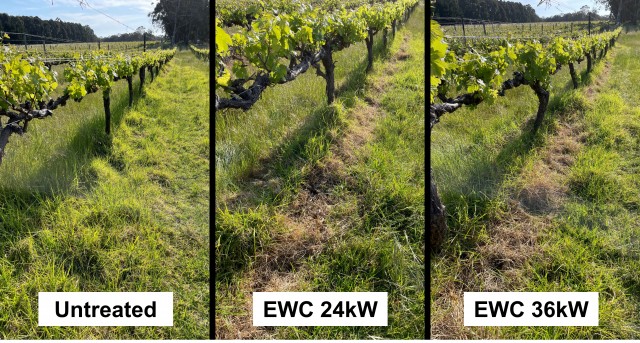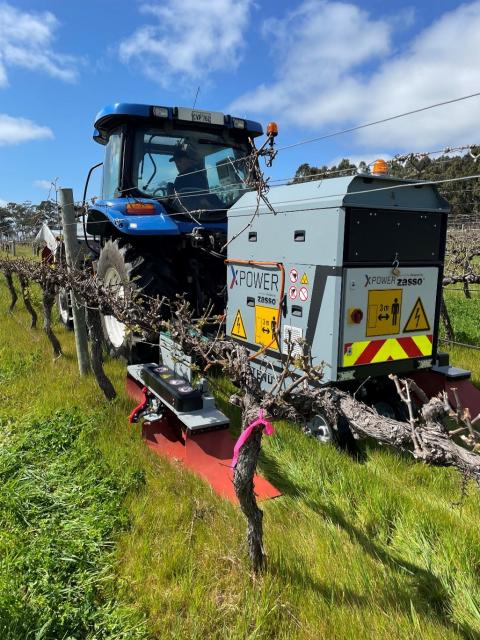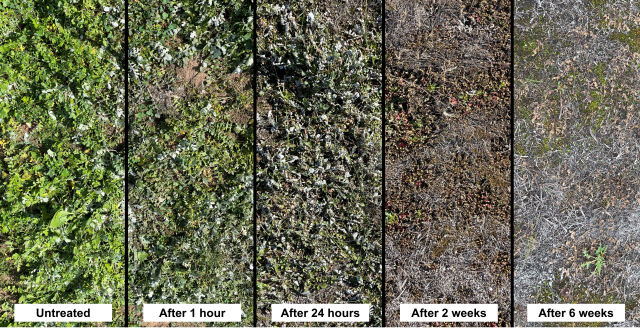Electric weed control: a new weed management option
The Department of Primary Industries and Regional Development (DPIRD) has commenced an Australian-first project to determine the best fit for electric weed control with AGXTEND, a brand of CNH Industrial.
Electric weed control (or electro-weeding) offers an alternative non-selective weed control method to reduce current chemical use and can be used across a variety of industries, including viticulture, horticulture, orchards and for urban/industrial weed management.
Trials completed in the Margaret River wine region in 2022 found that electric weed control efficiency was comparable to herbicide use of glyphosate (Crucial®) and amitrole with ammonium thiocyanate (Amitrole T), and greater than mowing (simulating grazing), regardless of power output (24 or 36 kW). Electric weed control killed weeds that came into direct contact with the electrodes, but left a swath of weeds under the vine strip where the electrodes could not reach.
These applications occurred on dense and mature grass weeds and conditions were suboptimal for achieving an effective electric weed control application due to wet weeds and topsoil. Manufacturer recommendations indicate optimal control when treating dry weeds with low topsoil moisture content. The trials also showed no evidence of damage to vines following the applications with NDVI assessment indicating no difference in vine growth between treatments.

DPIRD is using the electric weed control machinery XPower, powered by the company Zasso™' in these trials. This technology is already utilised across Europe and DPIRD is seeking to prove the concept of its applicability in Australian systems with the hope it will be certified for use here in the coming years.
For applications in viticulture and orchards, the XPS applicator is used with the XPower and is designed to control the 55cm of weeds adjacent to a row of vines (or trees) and has a swinging ‘intercept’ arm, designed to control weeds directly underneath the vines. When this machinery is used in Europe it commonly has a 24 kW power unit. However, the machine currently being tested in Australia is 36 kW, and so the efficacy of the two different application rates is also being compared.

The technology works through the conversion of the tractor’s power take off (PTO) power into a high voltage current in the rear power unit which is transferred to the applicator unit containing electrodes. As the tractor moves forward, these electrodes touch the plants and transfer the current through their shoots and roots. The current transforms to heat energy and bursts the plant’s cells, killing it or suppressing growth, with effects visible instantly. The current then goes into the soil and a second row of electrodes of the opposite charge pull the current back up, closing the circuit.

DPIRD will continue to test this new technology in viticulture, with trials to be replicated in the Margaret River region this year. The project will also complete a range of other industry trials across the state with funding from the Grains Research and Development Corporation (GRDC), Wine Australia, AHA Viticulture and the Cotton Research and Development Corporation (CRDC).
For more information on this project, please contact Miranda Slaven or Catherine Borger.
